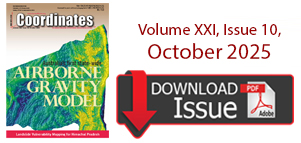| Galileo Update | |
Galileo update
Successful re-certification of German Galileo Test and Development Environment GATE from TÜV SÜD
IFEN GmbH has announced that the German Galileo test and development infrastructure GATE has recently been re- certificated by TÜV SÜD stating the conformance to ISO 17025 as Galileo open-air test laboratory, to receiver integrity testing (RAIM) for Safety-of-Life (SoL) applications and Galileo SIS ICD conformance of signal characteristics and signal quality.
For application tests it is essential for the Galileo Test and Development Environment GATE to provide constant Galileo specifications for tests (like position accuracy, signal spectrum and navigation data). This is essential for both test types: tests with the eight ‘GATE satellites’ only and tests with simultaneously usage of the already existing Galileo satellites in orbit. The compliance to the specification was recently verified by the company NavCert GmbH from Braunschweig, Germany in a so called re-certification of the GATE test bed. Compared to a full certification, taking part every three years, a re-certification only verifies the compliance to the specification by the use of random inspections though tests in GATE.
Third, fourth Galileo FOC Satellites confirmed fit for Soyuz Launch
The third and fourth Galileo Full Operational Capability (FOC) satellites are a confirmed “fit” for their Arianespace Soyuz launch March 27, having made initial contact with the mission’s dualpayload dispenser in French Guiana, according to Arianespace.
The fit check was completed over a two-day period inside the Spaceport’s S1A payload preparation building. The two satellites were installed separately, with the Flight Model #3 (FM3) spacecraft integrated on — and subsequently removed from — the dispenser on Feb. 9. Flight Model #4 (FM4) underwent the same process the following day.
The payload dispenser for Galileo was developed by RUAG Space Sweden for Arianespace, and carries one satellite on each side. It will deploy the spacecraft during the Soyuz launch by firing a pyrotechnic separation system to release them in opposite directions at the orbital insertion point.
Final integration on the dispenser is to be performed during upcoming processing at the spaceport, and will be followed by the completed unit’s installation on Soyuz.
The March 27 mission — designated Flight VS11 in Arianespace’s numbering system — will be the company’s fourth launch carrying spacecraft for the Galileo constellation. FM3 and FM4 were built by OHB System, with Surrey Satellite Technology Ltd. supplying their navigation payloads.











 (No Ratings Yet)
(No Ratings Yet)






Leave your response!